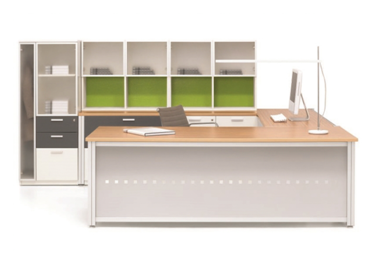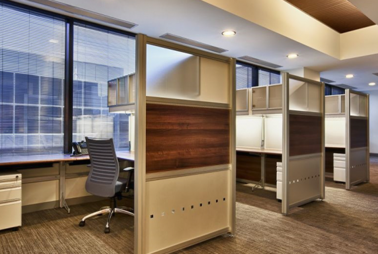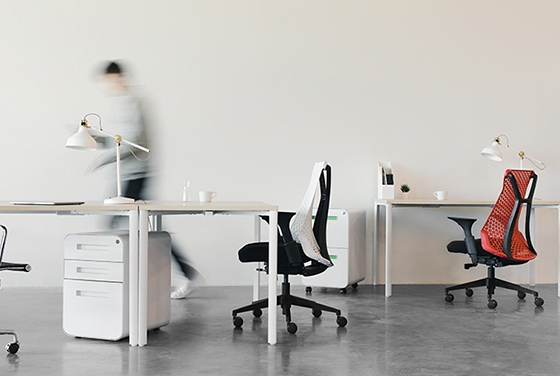When choosing office furniture for your workspace, it’s important to take note of the available material options that can either make or break your corporate decor. Style matters just as much as functionality in today’s workplace, especially for companies who want to attract the best talent, and the most lucrative clientele.
Therefore, it’s best to familiarize yourself with the different material options for office furniture, so you can make an informed decision as to which ones will best suit your workspace. This will guarantee the right mix of aesthetics and quality that is most in line with your corporate identity.
WOOD
When it comes to office furniture materials, wood tones remain one of the most traditional and popular options. It can suit a variety of vintage and contemporary styles, depending on a few key factors. Modern wood materials are treated by the factory to withstand the bumps and bruises of the daily work routine, but they should still be handled with care, to prevent any long-term blemishes. The use of wood colorslike oak, cherry, walnut and maple can add an organic splash to a workspace, which is especially important in an environmentally conscious age.
METAL
It’s important to recognize that metal materials are more than just the sum of their shininess. Depending on which metal is used for office furniture, it could have significant impacts on your workspace. For instance, aluminum is a much lighter metal, which is a good choice for companies that routinely redeploy office furniture on a regular basis. By contrast, steel is a tougher and more resilient metal, but it comes at the cost of added weight. It’s also worth noting that different metals come with varying weight capacities, so be sure to choose the right one for your space.
PLASTIC
Within the broad spectrum of office furniture material options, plastic tends to rank lower than, say, wood, which offers a premium feel. Nevertheless, the plastics used today tend to focus on longevity, as well as cost effectiveness. Polypropylene and polymer are two examples of higher-quality industrial plastics used to create durable and attractive office furniture. Plastics are also available in a wide array of colors, which can offer more choice for companies with vibrant office designs.
MESH & FELT
Often overlooked, but no less important are mesh and felt options, several of which have become mainstays in corporate office furniture designs. Mesh offers a unique and attractive aesthetic that blends well with function and durability, creating resilience and full-body support for things like chairs. Felt and similar types of upholstery can soften a piece of office furniture and create a more comfortable and attractive experience, which is great for workplaces that focus heavily on stress relief and employee well-being.
SYNTHETICS
There are many modern synthetic material choices that have found comfortable niches within the office furniture sphere. Each one serves an important function, and comes with a set of distinct advantages and strengths.
For instance, nylon is a strong, damage-resistant material that can withstand lots of abuse, and ride out years of use without falling victim to abrasions, tearing or cracking. Similarly, polyester is an equally resilient material that holds its shape without shrinking or stretching, and it’s easy to clean.
Vinyl and leather are used heavily in chairs and sofas, thanks to their durability and wide range of options. For instance, genuine leather can stand the test of time, while “healing” itself from scuffs and scratches, though it is quite expensive. Consequently, PU leather is a good choice for companies trying to stretch the budget, or those with office furniture that doesn’t experience heavy use.
CONCLUSION
Many companies like to choose from several of the options listed above to compliment their office decor and layout. Once again, form is just as important as function, and the right materials can say a lot about your company, even if you think nobody will notice. The right mix of materials can bring class, sophistication and elegance to your workspace, regardless of your industry, and they can save a pretty penny in the process.





